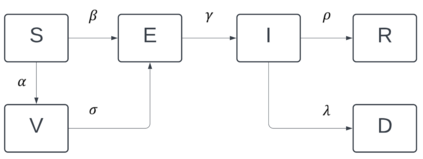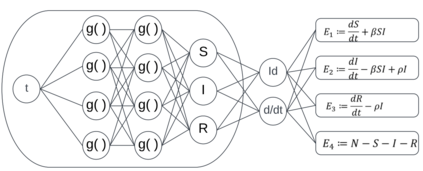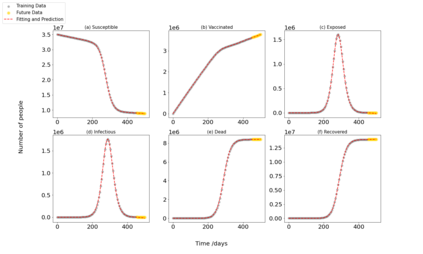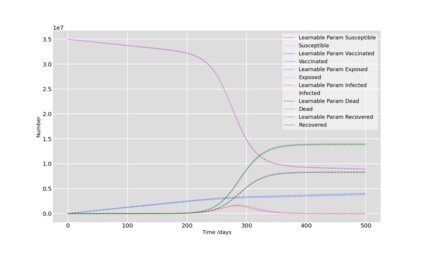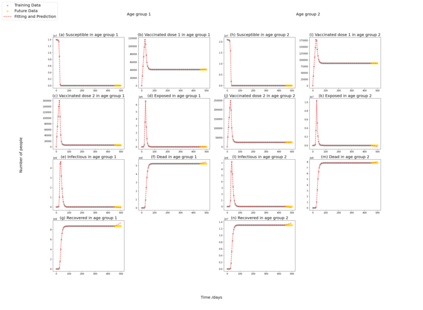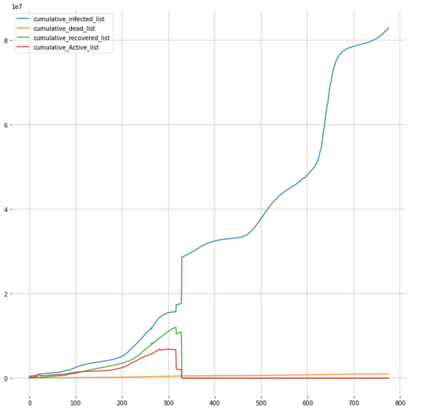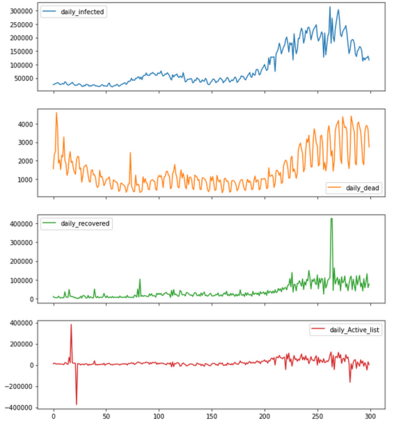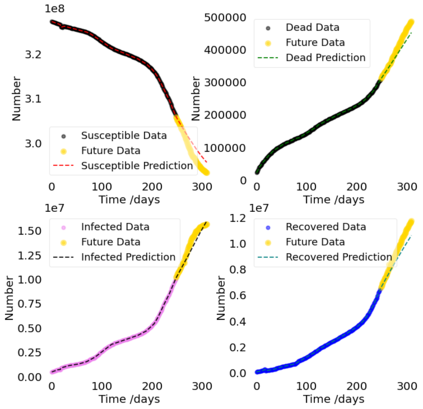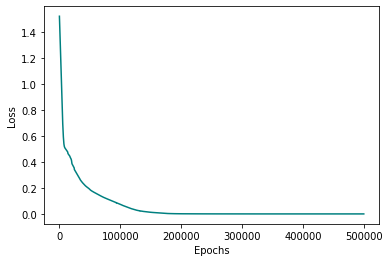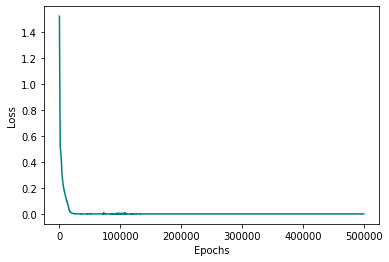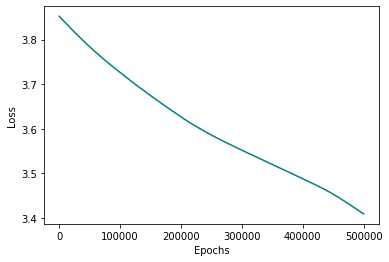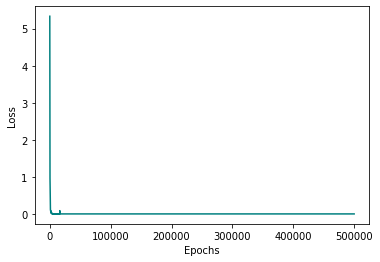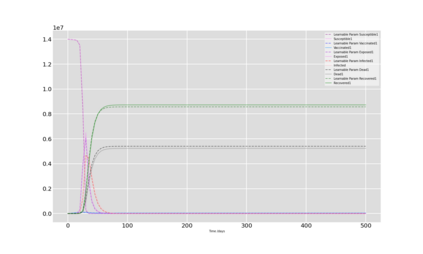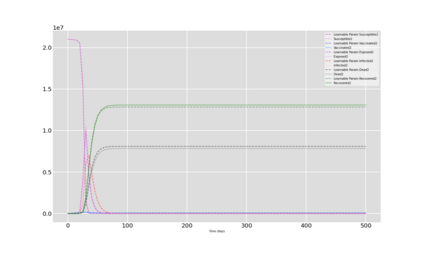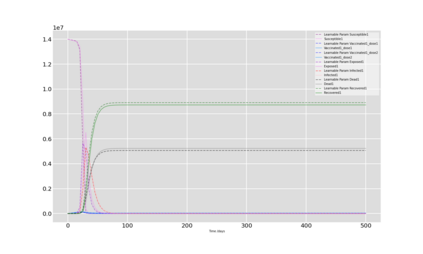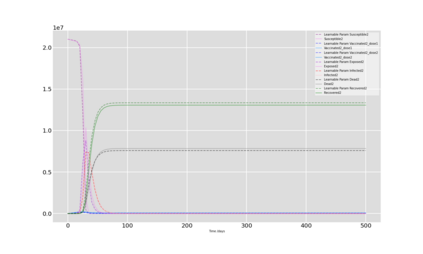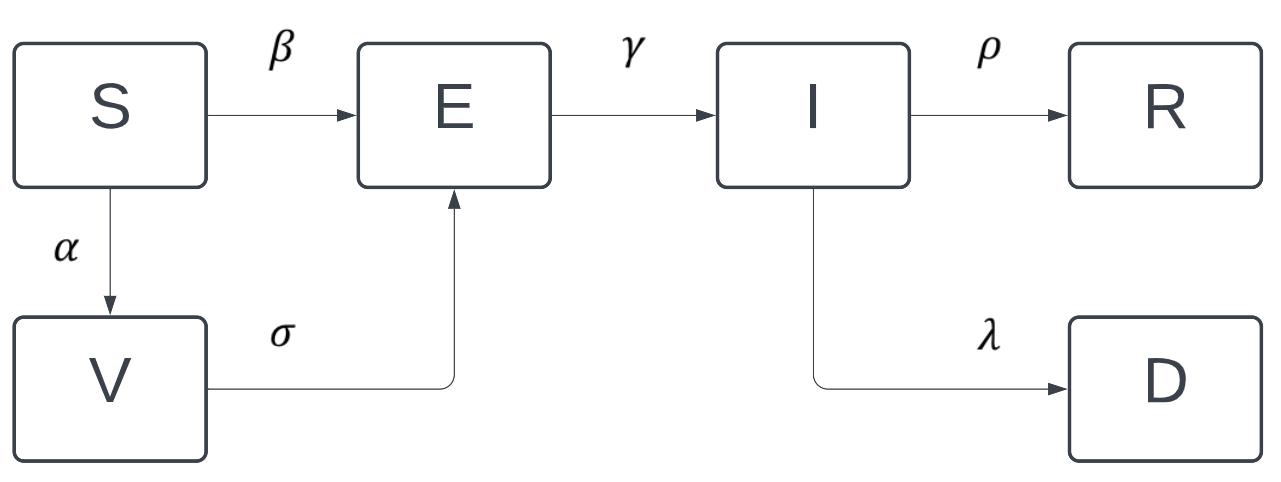COVID-19 pandemic has had a disruptive and irreversible impact globally, yet traditional epidemiological modeling approaches such as the susceptible-infected-recovered (SIR) model have exhibited limited effectiveness in forecasting of the up-to-date pandemic situation. In this work, susceptible-vaccinated-exposed-infected-dead-recovered (SVEIDR) model and its variants -- aged and vaccination-structured SVEIDR models -- are introduced to encode the effect of social contact for different age groups and vaccination status. Then, we implement the physics-informed neural network (PiNN) on both simulated and real-world data. The PiNN model enables robust analysis of the dynamic spread, prediction, and parameter optimization of the COVID-19 compartmental models. The models exhibit relative root mean square error (RRMSE) of <4\% for all components and provide incubation, death, and recovery rates of $\gamma= 0.0224$, $\lambda=0.0002$, and $\rho=0.0082$, respectively, for the first 310 days of the epidemic in the US. To further improve the model performance, temporally varying parameters can be included, such as vaccination, transmission, and incubation rates. Our implementation highlights PiNN as a reliable candidate approach for forecasting real-world data and can be applied to other compartmental model variants of interest.
翻译:COVID-19大流行已经在全球产生了破坏性和不可逆转的影响,然而传统的流行病学模型方法,如易感感染恢复模式(SIR),在预测最新流行病情况方面成效有限,在这项工作中,采用易感疫苗接种受感染死复发模式(SVEIDR)模式及其变体 -- -- 年龄和疫苗接种结构的SVEIDR模式 -- -- 将社会接触对不同年龄组和疫苗接种状况的影响编码起来。然后,我们在模拟数据和实际世界数据方面实施物理知情神经网络(PINN),PINN模型使得能够对COVID-19分包模式的动态传播、预测和参数优化进行有力的分析。这些模型显示所有组成部分的相对根位平均误差(RRMESE)及其变体 -- -- 年龄和疫苗接种结构的变体 -- -- 年龄和疫苗接种结构型模式(Gammam=0.0224美元, 美元=0.0002美元, 美元和美元=0.002美元。对于最初310天的模拟神经网络数据,可以进一步对COVID-19分包模式进行精确分析。

